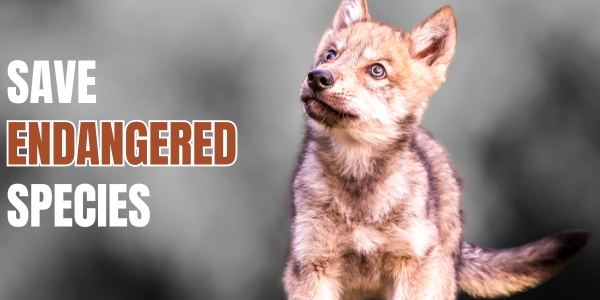Arkansas darter (Etheostoma cragini) | ESA status: none
Arkansas darter
A tiny, distinctive fish, the Arkansas darter faces the constant threat of groundwater pumping destroying the cool waters of its home.
Arkansas darter facts
The Arkansas darter is 1.6 to 2.2 inches long and lives in cool water amid leafy aquatic vegetation in spring-fed pools, marshes, and slow-running streams. The darter feeds on aquatic insects (especially mayflies) and plant material. Breeding males have bold orange coloring on their underside. Females lay eggs in organic debris covering the pool, marsh, or stream bottom.
Arkansas darter habitat
The Arkansas darter’s range stretches from southwestern Missouri and northwestern Arkansas to northern Oklahoma, southern Kansas, and eastern Colorado. It was once common in freshwater springs, marshes, and tributaries in the five states it calls home. Today, much of this region is subject to intensive agriculture, and groundwater used for irrigation has dewatered local springs and streams that were habitat for the fish.
The darter is dispersed across several drainages where groundwater pumping has not yet dewatered its habitat. Populations have been identified in the upper Arkansas River drainage in southeastern Colorado, the middle Arkansas River drainage in Kansas and northwestern Oklahoma, and in the Neosho River drainage of southwestern Missouri, northeastern Oklahoma, and northwestern Arkansas. Major darter populations are isolated from each other, disconnected by habitat loss and degradation.
What are the threats to the Arkansas darter?
In addition to groundwater pumping, the Arkansas darter is threatened by water pollution, invasive plants that degrade its riverine habitat, livestock grazing, and residential development. Dams and reservoirs fragment darter habitat and prevent its dispersal. Spills and runoff from confined animal feeding operations threaten water quality locally. For example, a lagoon holding animal waste spilled into a waterway in Kansas in 2005, depositing a “thick organic ooze” along the stream where darters live, likely hindering reproduction.
Four of its five home states recognize the Arkansas darter as an endangered, threatened, or vulnerable species. The U.S. Fish and Wildlife Service designated the fish as a candidate for protection under the Endangered Species Act in 1991 and recently noted that the species’ range is contracting in some watersheds in Oklahoma, Kansas, and Arkansas. Unfortunately, the Service found the fish “not warranted” for listing in 2016. Almost all Arkansas darter populations occur on privately owned land, where species conservation is often secondary to other land uses.
Healthy, spring-fed streams, marshes, and tributaries with ample, perennial flow are increasingly rare in the lower Midwest. The Arkansas darter has no other options for habitat. Groundwater pumping and associated land uses must be managed to conserve these important aquatic environments if the darter is to survive. Endangered Species Act listing is vital to secure the future of this fish.
Historical Significant Actions
Wildlife Press: Arkansas darter
Federal Court Approves Historic Species Agreement
Settlement between WildEarth Guardians and Interior Benefits Hundreds of Imperiled Plants and Animals
Contact: John Horning (505) 988-9126 x1153
